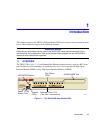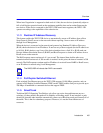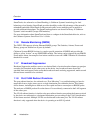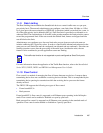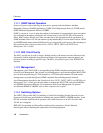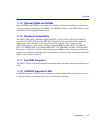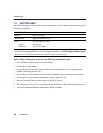
Overview
1-4 Introduction
SmartTrunk, also referred to as SmartTrunking, is Cabletron Systems’ terminology for load
balancing or load sharing. SmartTrunk provides the ability to take full advantage of the network’s
redundant bandwidth. SmartTrunk divides network traffic across multiple ports in parallel to
provide additional throughput. The SmartTrunk application can be used with any of Cabletron
Systems’ switch modules (except ATM modules).
For more information about SmartTrunk and how to configure it the SmartSwitch device, refer to
the Cabletron Systems SmartTrunk User’s Guide.
1.1.6 Remote Monitoring (RMON)
The 2H253-25R supports all nine Ethernet RMON groups. The Statistics, Alarms, Events and
History groups are enabled on all ports by default.
Cabletron Systems RMON Actions is a vendor-specific extension of RMON and provides the
ability to set an “Action” on any SNMP MIB variable. The Action can be triggered by any RMON
Event and/or Alarm. An example of an Action would be to turn off a MIB-2 interface if a broadcast
threshold is crossed.
1.1.7 Broadcast Suppression
Broadcast Suppression enables a user to set a desired limit of receive broadcast frames per port/per
second to be forwarded out the other ports on the device. Any broadcast frames above this
specified limit are dropped. In the event that broadcast frames are being suppressed, multicast and
unicast frames continue to be switched.
1.1.8 Port/VLAN Redirect Functions
The port redirect function, also referred to as “Port Mirroring,” is a troubleshooting tool used to
map traffic from a single source port to a single destination port within the device. This feature
allows frames, including those with errors to be copied and sent to an analyzer or RMON probe.
The analyzer or RMON probe will see the data as if it were directly connected to the LAN segment
of the source port.
The VLAN redirect function is similar to the port redirect function except that the frames received
by the device are redirected to a designated destination port according to the VLAN classification
of the frames received. Multiple VLANs can be directed to the same port. The VLAN redirect
function is only supported when the device is operating as an 802.1Q switch.








